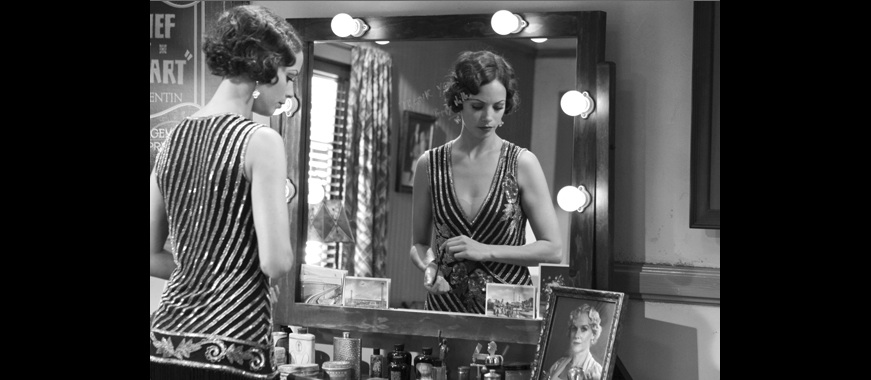Laurence Bennett

AS: Where do you see production design headed? Do you see a lot more greenscreens?
LB: As technologies develop the right tools for any given story will be employed to make those pictures. On a piece like The Artist it wouldn’t have made sense to rely too much on digital technology. In the case of The Artist it made more sense for us to look closely at how the artists and craftspeople of that era had approached design and to try to emulate that. Having a chance to work in a version of their world was really exciting and incredibly informative. I have enormous respect.
AS: How do you feel about production design being visible or invisible when you’re watching a movie? In The Artist there are some great homages to other films.
LB: Hopefully it doesn’t take you out of the story. Its funny, the people who are not in the business ask me if the way that I watch movies is affected by what I do. I have to say for the most part, No. I want to be entertained. I want to be told a story. I want to be taken someplace. As designers we make believable, living environments for the story and the characters. We don’t want to be anything but the setting. For the most part! But there are exceptions.
In setting the tone of a scene, in reinforcing something that’s going on dramatically in a scene, sometimes you can play against it. The obvious temptation in a scene that is emotionally very hot would be to do an environment that’s very alive and very warm. Sometimes the right decision is to do something that’s counter-intuitive. Do something that’s cool and removed. Let the emotion of the scene contrast with the setting. Those are some emotional tricks that you can play with color- but it’s really not the point when you’re talking about a black and white movie!
AS: Do you find yourself doing more with shapes and textures when working in black and white?
LB: Texture and pattern. Absolutely. And also luster. You know, having sheens or flat surfaces to contrast is another way to get separation.
AS: Do you ever find yourself involved on movies after principal photography ends?
LB: Not as much as I’d sometimes like to be. But I’m always in touch with the producer and director through post. I often drop in to editorial if I’m in the same part of the world. But we do need to look at how the designer can be more involved in post, as is necessary. You’ve talked to a lot of designers in the past while. This must be something that comes up.
AS: People like Sarah Greenwood, who did the Sherlock Holmes movies, said she finds it interesting but that she really has no desire to be involved after principal photography. Meanwhile Grant Major, The Lord of the Rings designer, is hoping to craft his future contracts so that they include him remaining on during post.
LB: For certain kinds of pictures that might really make sense. I think there’s a balance to be struck. Certainly I want to be as available as necessary throughout the process if I can help make the picture better.